STUDENTS PROJECTS
PROJECTS2013
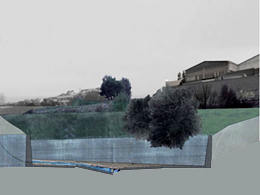
26 March, 2014
Spatial transcriptions
Proposal on methodology and intervention in 4 sites of Haradros.
Students : Alexaki Ioanna, Politi Georgia
Supervisor: Zavoleas Yiannis
Consultant: Daflos Costas
Architecture Department of Patras
Presentation date: 28/6/2013
The region of study is located 300m west to the University of Patras, as a part of Haradros stream, close to a residential area.
The specific area was chosen because the qualities that may be detected in the stream as a hole, can be found there in greater density: a non- designed space, without any specific programmatic content, that has ensued as the residual result of the design process, an "interval" in the urban fabric. According to Vana Tentokali, the "interval space" is an "Incomplete spatial linkage" in the urban fabric, with a liberating potential.
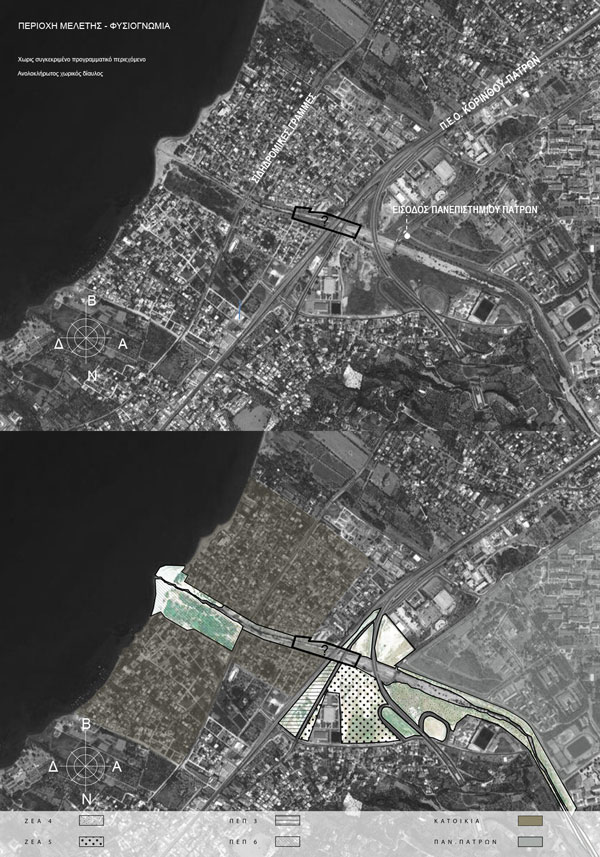
Two interrelated concepts, that of positionality and the mechanism of translation are proposed by J.Boys, to raise a question regarding to the process of 'meaning making" in the architectural procedure. The concept of positionality aims to make explicit the "positions" of different actors in the process of building (and consuming) the city, while mechanisms of translation, aims to analyze the specific process by which the different positionalities in particular contexts are transformed into material form. [1] The approach of "positions", could promote the development of a politics regarding architecture, open to different concepts/ meanings describing the material and also the imaginary narrations of reality. [2]
Defining Haradros as a residual space, and with the approach of 'positions", we deduce methodological tools to approach the region in 3 layers:
1. Recording improvised uses
2. Forming an imaginary narrative(reconstructing remnants of a water supply system, destroyed/disused or partially operational)
3. Deconstructing the web - site, where activisms of residents of the broader region are posted.
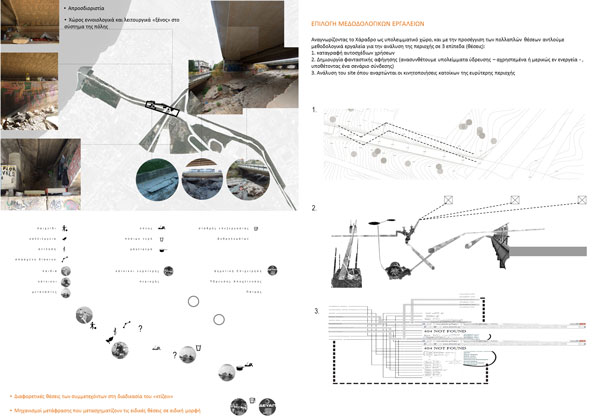
We focus on the way these improvised uses "activate" the four objects constructing spatial transcriptions of the site.
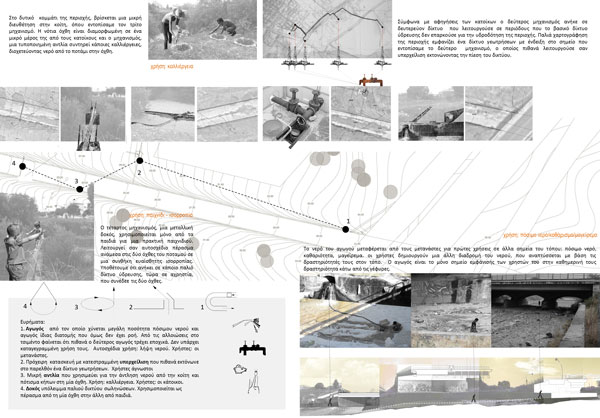
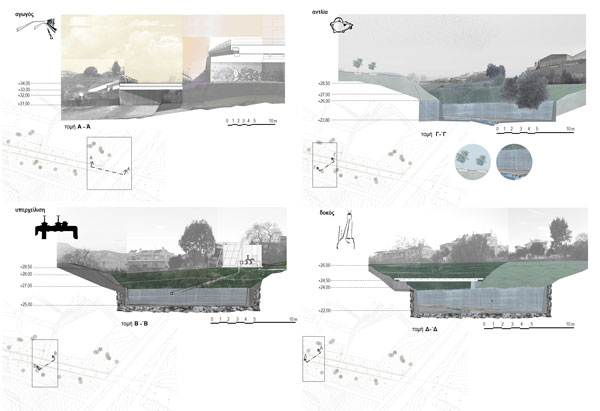
We produce our own narrative for the site, Constructing an imaginary mechanism, that consists itself a spatial transcription of the site. Respectively to the improvised uses that we recorded, that are non - designed, ab -normal, we use ready made objects which we rearrange, altering them by a new meaning. We relate the objects with the way users operate the four findings, and we connect them in a sequence according to the configuration of the four findings in the physical space. The construction might be perceived as an abstract machine, with an internal function, detached of any specific use[3]. As a material diagram, on which the "junctions/intersections" might work as potential spots of appearance of superimposed narratives[4]. The machine is an attempt of approaching the site, collecting it and condensing it, reflecting individual elements of different layers of appropriation. The mechanism cannot be seen independently: together with the site, the different layers of its appropriation that where recorded and those that may be recorded in a following time, might be seen as a continuum.
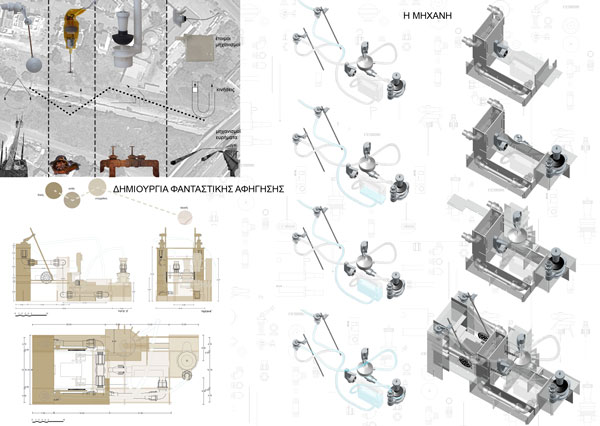
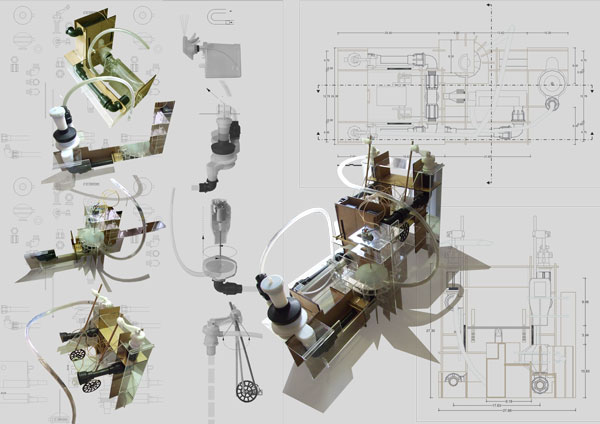
At the third level we focused on the website xaradros.wordpress, where a dialog is developed, relating the intention of the local authorities and ΔΕΥΑΠ (Municipal Company of Water supply and Drainage) to create a sewerage depot in the area of Haradros. In the sequence of the posts, we track two blind linkages to other websites. Approaching the website with spatial terms, we interpret the linkages as spaces - between two (web)sites, namely intervals, as defined above. Being emptied by their initial use, they remain as "Incomplete spatial linkages", open to future uses. We activate these junctions, converting them to active linkages that lead to our own posts. Starting from the way that the four findings are operated by the users, we formulate four primitive questions. The answers of the users, further define the virtual environment that we designed, creating their own narrative, evolving or possibly destroying ours.
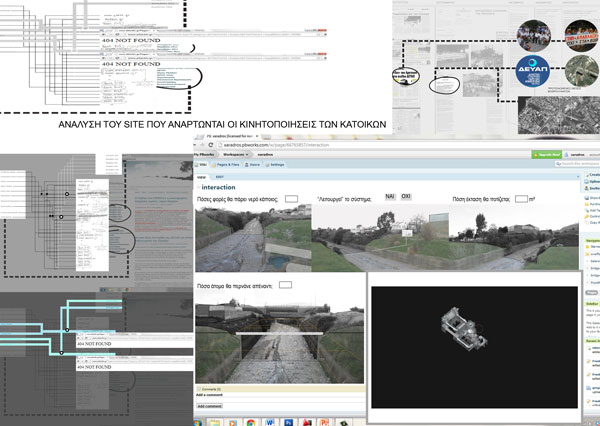
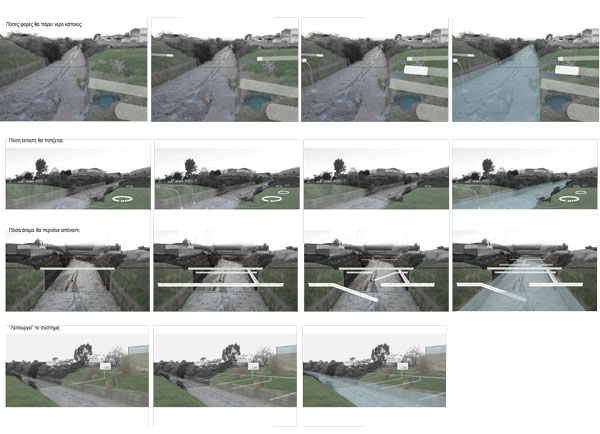
Beginning from the ascertainment that residual spaces such as Haradros cannot be "regulated" with the traditional tools of design, an experimental approach was attempted. A methodology was elaborated, that would take under consideration the coexistence of present and past, real and imaginary in a continuum. The mechanism, as a concentrated simulation of Haradros, together with the website and the physical site consist a continuum of overlapping narratives that make the site re- emerge in three different materialities. It receives the data provided by the users, as dynamic components that affect the result of design, consisting an intermediate apparition in a consecutive production of different forms. The mechanism may be seen as a snapshot of the aggregate machine, which is the various layers of appropriation of Haradros. Consequently, no aesthetical solution is proposed for such spaces, but rather a methodology towards their comprehension.
[1] Boys, J. [1998], "Beyond metaphors and maps; re-thinking architecture and gender", στο: R. Ainley (επιμ.) New frontiers: space, bodies and gender, σσ. 203-217, Λονδίνο: Routledge.
[2] Λαδά Σάσα [2009], "Φύλο και χώρος: Αρχικές προσεγγίσεις και νέα ερωτήματα ή μεταξύ ορατών και αοράτων", στο: Σάσα Λαδά (επιμ.) Μετα - τοπίσεις. Φύλο, διαφορά και αστικός χώρος, σσ. 15-31, Αθήνα: εκδ. futura, σελ. 28.
[3] Ό.π.
[4] Eisenman, Peter [1999], Diagram Diaries, Italy: Thames & Hudson.










